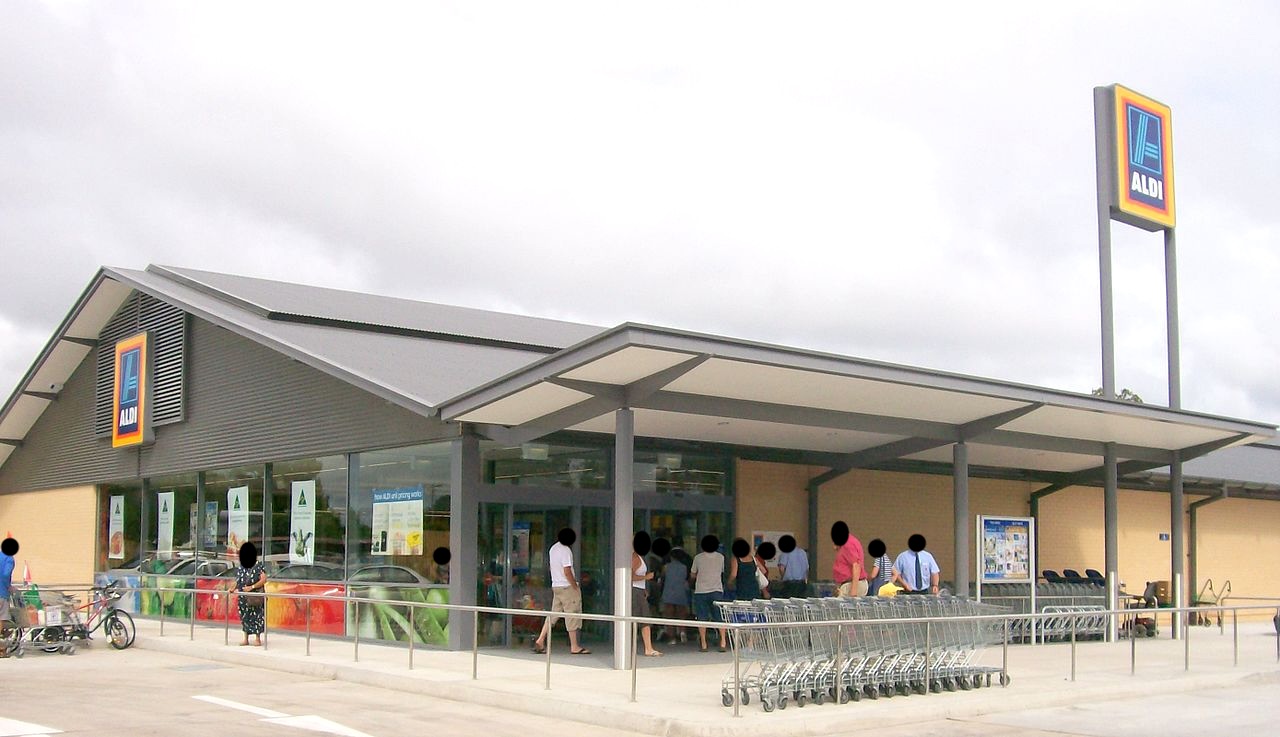
Aldi’s marketing mix (4Ps) focuses on low prices and a mixture of promotional tactics for competitive products that draw buyers into the company’s retail locations. The decisions, strategies, and tactics in this 4P (Product, Price, Place, and Promotion) aim for optimizing the company’s effectiveness in reaching its target market and growing its sales revenues. The effectiveness of this marketing mix and related strategies ensures business success despite the competitive obstacles and issues explained in the Five Forces analysis of Aldi. The discount supermarket chain’s marketing mix is known for low prices and a no-frills approach to providing efficient retail service.
Aldi’s marketing strategy involves using low selling prices to effectively compete with Lidl, Walmart, Whole Foods, Costco Wholesale, Amazon’s e-commerce and brick-and-mortar stores, and other retail businesses. The marketing mix of Home Depot, which is not a direct competitor, also influences Aldi’s marketing mix and marketing strategy implementation.
Products in Aldi’s 4Ps
The products sold at Aldi’s stores and website target consumer demand, especially for basic commodities, like food and household essentials. The company’s product mix involves merchandise and service for this 4P. Aldi’s marketing mix includes the following products:
- Retail service
- Consumer goods
Aldi provides retail service, which is an organizational product (or output) that involves managing the movement and sale of merchandise to shoppers. In addition, the company has private-label branding for various consumer goods. Although other companies manufacture these goods, Aldi owns merchandise through its brands. In this marketing mix, retail service and consumer goods are what buyers pay for when they shop at the company’s stores.
The selection of products and private labels used in this marketing mix implements the cost and product objectives of Aldi’s competitive strategy and growth strategies. For example, the company’s competitive strategy aims for low costs that affect the kinds of products that are available at the company’s stores. Also, the company’s marketing strategy involves a product mix that accounts for current trends in the retail market. For instance, the external factors explained in the PESTEL/PESTLE analysis of Aldi inform decisions about the types of merchandise included in this marketing mix.
Aldi’s Price & Pricing Strategy
This 4P includes price points and price ranges that capitalize on strategic objectives for low costs and low prices. Aldi’s marketing mix applies the following pricing strategies:
- Everyday low price (EDLP) strategy
- Market-oriented pricing strategy
- Loss leader strategy
Aldi is known for low prices, which are a consequence of the Everyday Low Price (EDLP) strategy. However, the company’s marketing mix also applies market-oriented pricing, which is a strategy that adjusts prices according to market factors, including supply and demand, as well as trends in consumption and consumer preferences. Moreover, Aldi’s marketing strategy involves loss leader pricing for a different set of products every week or season.
Through these pricing strategies, the company’s 4Ps attract customers for more sales revenues. These pricing strategies are based on the goals of affordability and savings stated in Aldi’s mission and vision. These strategies are especially effective on price-sensitive shoppers. High efficiency and productivity combined with low costs achieved in Aldi’s operations management enable the low prices used in this marketing mix.
Place in Aldi’s Marketing Mix
The locations or places complement each other in this 4P to grow the company’s retail market reach. The following places are included in this marketing mix of Aldi:
- Aldi stores
- Aldi grocery website and app
Aldi’s stores are the primary places for sales transactions. These store locations are based on accessibility and proximity to consumer populations. This marketing mix also includes online shopping services for customers’ convenience. The company’s website reinforces the market presence established through the stores. The divisions of Aldi’s business structure (corporate structure) represent some of the managerial requirements of the location or place decisions in the distribution strategy for this element of the marketing mix.
Aldi’s Promotion
Aldi’s marketing communications mix promotes the discount supermarket chain and its private-label brands. Marketing campaigns and promotional tactics in the company’s 4Ps enhance corporate and brand image and persuade customers to shop at the company’s stores. For promotion, Aldi’s marketing mix applies the following:
- Sales promotion (weekly or seasonal)
- Advertising
- Public relations
Sales promotion is regularly used through weekly discounts and special offers at Aldi stores. This marketing mix also includes advertising to promote the company, its retail service, and its brands. On the other hand, the company’s public relations focus on developing a positive business image that encourages people to buy from the company’s stores and website. The public relations component of this 4P reflects Aldi’s corporate social responsibility (CSR) and ESG goals for sustainability and other stakeholder interests.
The promotional tactics in the company’s marketing strategy rely on retail business strengths and competencies to successfully communicate with target customers. For example, strong brands, strong control on product selection, and the other competitive advantages detailed in the SWOT analysis of Aldi contribute to the effectiveness of sales promotion and advertising used in this marketing mix.
References
- Aldi Online Grocery Shopping for Pickup and Delivery.
- Aldi Products.
- Merz, M. A. (2025). International Marketing: Strategy and Theory. Taylor & Francis.
- Upcoming Aldi Finds.
- Van Crombrugge, M., Breugelmans, E., Cleeren, K., & Neslin, S. A. (2025). Retailer marketing mix response when launching a direct channel: Not all retailers are alike. Journal of the Academy of Marketing Science, 1-22.
- Wu, X. (2025). An analysis of the international differentiated marketing strategy pattern of multinational supermarket brands: A case study of Aldi. In Global Dialogue on Media Dynamics, Trends and Perspectives on Public Relations and Communication (pp. 540-546). CRC Press.